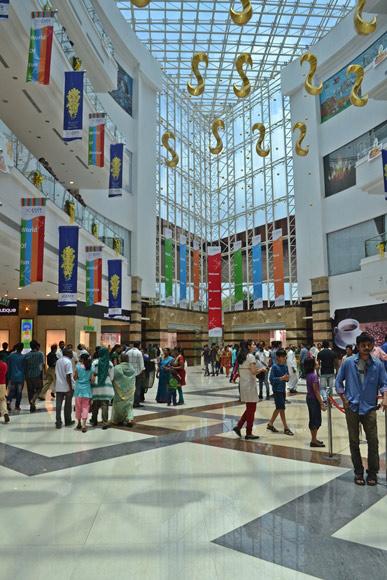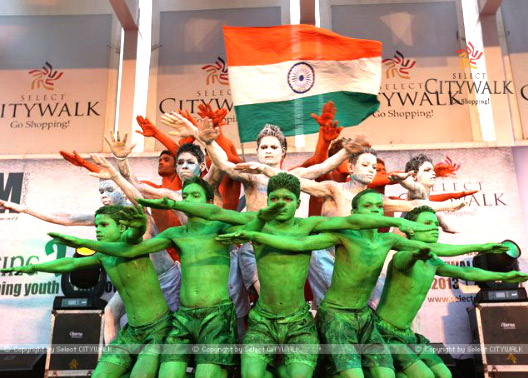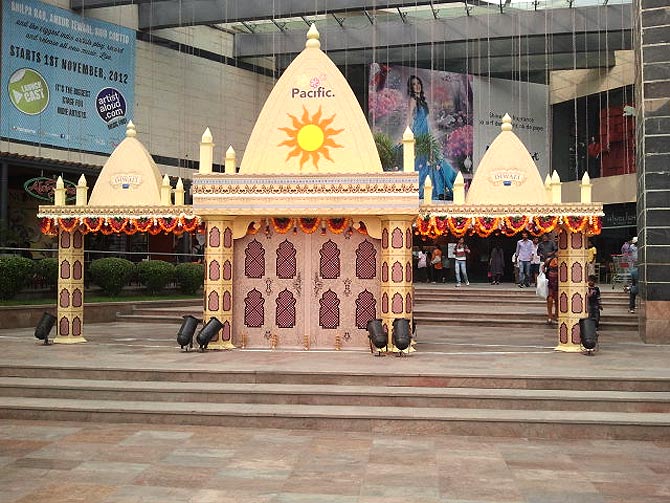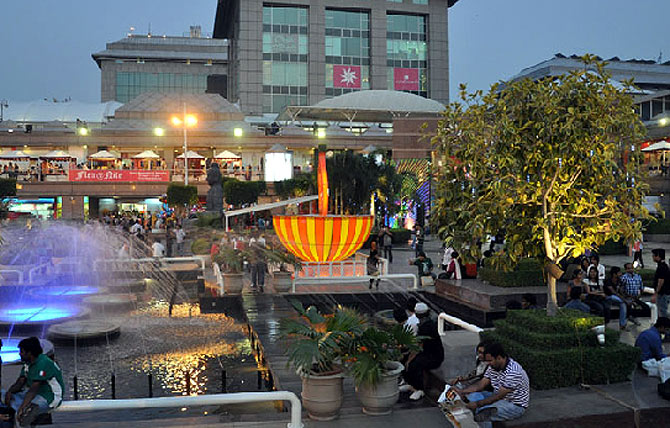Photographs: Rediff Archives Adrian Terron
Consumer spending and the sentiment that guides it are the key to the growth of any market economy.
Data and analysis on consumer behaviour clearly indicates that it is one of the most fundamental economic indicators.
The Nielsen global consumer confidence index indicates that despite ranking above other economies in confidence, the Indian consumers' confidence has been steadily declining over the last few quarters.
Consumer confidence in India indexed at 118 in Q2 2013, a two-point decrease from Q1 2013 (120), and a one-point decrease from Q2 2012 (119). India has slipped to the third most optimistic country, after Indonesia and the Philippines.
The impact of this on business has not been lost and has prompted many business to scour the marketing playbook for levers of growth and analogies that might infuse fresh thinking.
While theories might abound, the real data indicates that there is hope. The most clear signal seems to be the continued success and impact of retail events on modern trade.
...
What makes customers in India splurge
Photographs: Courtesy, Select City Walk
Understanding 'Event weeks' to glean insights
Currently, Big ticket events play a vital role for the retail industry. At an overall level, events contribute to 12 percent of sales within these five key markets and for these chains as a group.
Delhi NCR and Mumbai contribute 13 percent followed by Pune, Hyderabad and Bangalore.
We also found that 'created events' like Republic Day and Independence Day record higher sales compared to Diwali week.
More recently however, 2012 Diwali sales itself have seen a 34 percent jump versus the same week in the previous year. And in a sign that Indian shoppers are now making modern trade an integral part of their lives, 'pay week' or the first week of the month is seen to register higher average sales on an on-going basis.
...
What makes customers in India splurge
Image: Diwali at Pacific Mall.A glimpse into the shopping cart
If you take a peek into the shopping basket and one will fine quite a few surprises.
While shoppers are picking up more food and staples during Diwali prompted by the need to gift and entertain guests, created events like Republic Day and Independence Day see greater shopper interest in non-food categories.
Interestingly, as a result of a widening shopper palate and the sudden surge of brands in the category, olive oil stands out as a category that has attracted more than its usual share of shopper interest.
...
What makes customers in India splurge
Photographs: Courtesy, Select City Walk
The same-store-story
In recent times, an important measure of performance and profitability has been the growth of same stores.
This essentially means looking at only the growth of stores that have existed during the previous period and excluding the impact of new stores. Nielsen Scantrack has the ability to measure this with the inclusion of 'Like for Like' - a unique measure that can compare same store growth across periods and markets.
This allows for a more accurate comparison and indicates that older, existing stores are succeeding in their catchments - a sign that events become a regular feature for shoppers.
...
What makes customers in India splurge
Photographs: Courtesy, Select City Walk
In Hyderabad for instance, incremental sales for same stores have grown faster than the total market in each event.
Amongst events, Republic Day 2012 registered similar or higher growth for same stores versus the overall store universe.
Similarly, Republic Day 2013 was ahead of other events in terms of growth with a robust performance across two consecutive years.
However, same store growth, though aggressive, is now slower than what it was in 2012 and is reflective of the overall universe of stores.
The author is Executive Director, CR and BASES, Nielsen India.







article